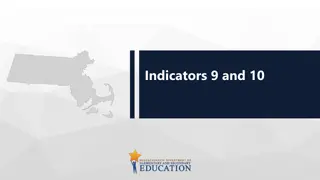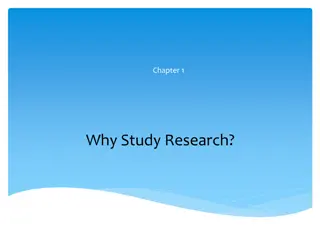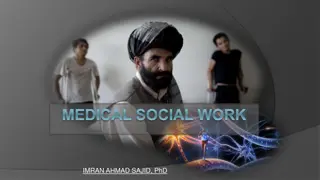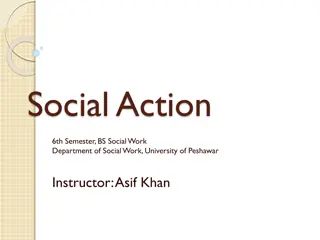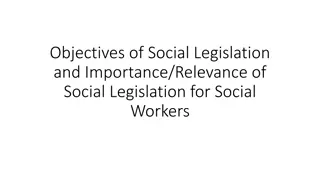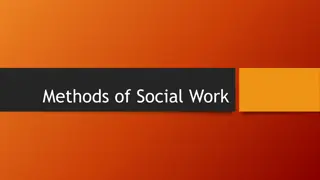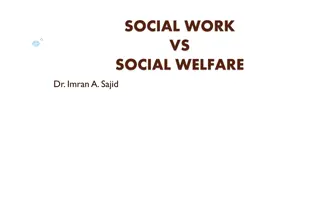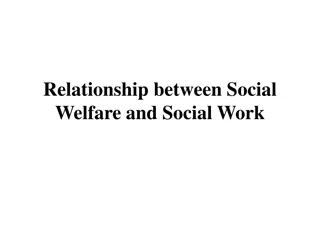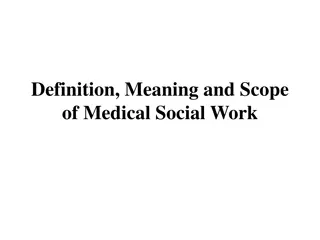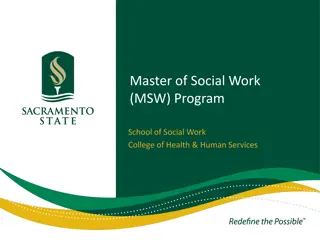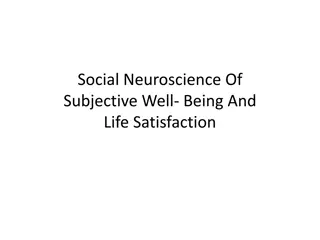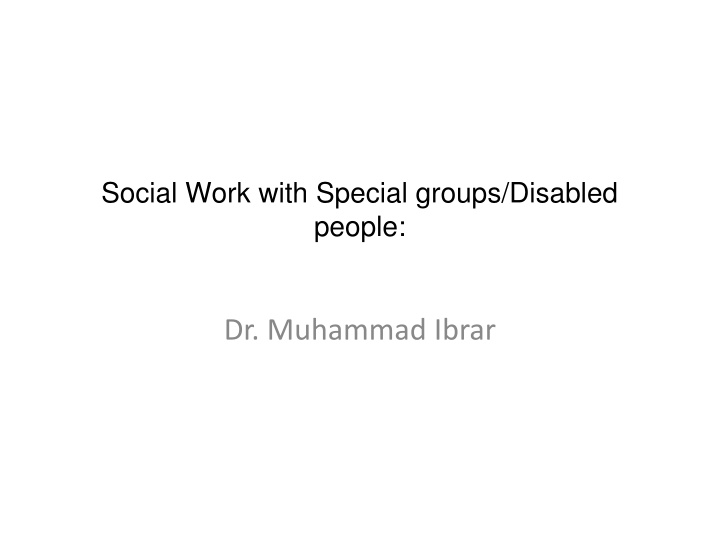
Disability: Insights on Special Groups by Dr. Muhammad Ibrar
Explore the definitions and facts about disabled individuals in Pakistan, including the prevalence of different disabilities, populations affected, and challenges faced. Discover the historical background of disability initiatives as outlined by the United Nations General Assembly in 1982.
Download Presentation

Please find below an Image/Link to download the presentation.
The content on the website is provided AS IS for your information and personal use only. It may not be sold, licensed, or shared on other websites without obtaining consent from the author. If you encounter any issues during the download, it is possible that the publisher has removed the file from their server.
You are allowed to download the files provided on this website for personal or commercial use, subject to the condition that they are used lawfully. All files are the property of their respective owners.
The content on the website is provided AS IS for your information and personal use only. It may not be sold, licensed, or shared on other websites without obtaining consent from the author.
E N D
Presentation Transcript
Social Work with Special groups/Disabled people: Dr. Muhammad Ibrar
Definitions Disability: Refers to malfunctioning of any organ of the body, visible or invisible. Deaf/Mute: A person who is unable to hear or speak especially one in whom inability to speak is due to congenital or early deafness. Crippled: Someone who is unable to walk normally because of an injury or disability to the legs or back.
Contd. Mentally Retarded: The term mentally retarded, is used to refer to the condition of a person who is significantly below average of the general intellectual functioning of a normal person. Multiple Disability: The persons having more than one disability.
Facts about the PWDs in Pakistan Total population of PWDs (5.035 million) in Pakistan, is surprisingly population of any of the individual countries population of Norway, New Zealand, Lebanon or Kuwait. From within Pakistan, PWDs population is more than the combined population of three Hyderabad and Peshawar. more than the cities i.e. Multan,
Contd. By type of disability, crippled population constitute 19.2 % of total PWDs, multiple disabilities 8.3 %, blind 8.2 %, mentally retarded 7.6 %, deaf 7.5 % and insane 6.4%. Thus the number of crippled populations (964,000) is more than the total population of Bhutan (738,000 in 2011), number of blind (412,000) is more than the total population of Maldives (320,000 in 2011).
Contd. There is need to investigate the causes of very high prevalence of PWDs population in certain districts, e.g. Karachi East (10.3%) and Awaran (9.7%). It means that every 10th person of Karachi East and Awaran suffers from any type of disability. More over, Kharan (8.7%), Chakwal (7.7%), Malakand (7.6%) and Jhang (7.2%) is estimated to have PWDs in the population.
Contd. It is estimated that around 1.4 million (28.9% of total number of PWDs) are the children of school going age (including 0.6 million girls) who do not have access to special schools due to limited capacity in existing special schools and also transportation problems.
Historical Background The United Nations General Assembly adopted the World Programme of Action Concerning Disabled Persons at its 37thregular session in 1982. The purpose of that programme was to promote measures for prevention of disabilities, rehabilitation and realization of goals, full participation of disabled development and equality . The Programme further emphasized that these concepts should apply with the same scope and urgency to all countries, regardless of their level of development. The United Nations Decade of the Disabled Persons (1983-1992) came into force thereafter. persons in social life,
Situational Analysis There are more than 600 million people with disabilities worldwide and 180 million are children, 400 million live in developing countries and 80 million in Africa. The World Health Organisation (2002) reported that about 40 per cent of Africa s population consists of people with disabilities, including 10-15% of school age children. To date some community members still encounter difficulties in accepting people with disabilities.
Introduction The WHO (2002) defines disability as an umbrella term, covering impairments, participation restrictions. Impairment is a problem in the body function or structure; an activity limitation is a difficulty encountered by an individual in executing a task or action while participation restriction is a problem experienced by an individual in involvement in life situations. Therefore, disability phenomenon, reflecting an interaction between features of a person body and features of the society in which he/he she lives. A disability may occur during a person s lifetime or may be present from birth. activity limitations and is a complex
Introduction In the living world every organism is dependent in its embryonic stage because of the fact that they cannot take care of themselves and hence needs the support of others for survival and growth. This dependency is treated as a part of normal behavior but from the word disabled or handicapped we mean a person who is unable to live a normal life and cannot perform his duties and obligations of life normally.
Contd. Allah has gifted human beings with five senses. These are the sense of sight, hearing, speech, touch and taste. These senses are so closely related and connected to each other that each part has to depend on the other to keep a person in a working condition. Any person who has some problem with his eyes, ears, limbs, or brain effecting the normal functioning then he is called to be handicapped.
Definition of Handicapped The word Handicapped or Disabled are used interchangeably and they are considered to be persons whose physical or mental well being is temporarily or permanently impaired, whether congenitally, illness or accident with the result that their self-dependence, employment is impeded (hampered). The word disability means the reduction of functional ability to lead a fruitful daily life. schooling or
Contd. A handicapped person as the person who has a generally recognized and determined physical or mental defect which prevent him from taking part freely in the activities that are supposed to play an important role in the development of his personality.
Contd. Disability symbols
Types of disability 1.Speech and hearing disabilities can be caused by various factors. In some cases, genetics can be closely related to some disabilities. Some people are genetically subject to some disabilities. Speech disabilities are related to problems with speech. Some people cannot speak at all. Some people can make sounds, but these are not articulated (spoken) sounds, and they are hard to understand when talking. Hearing disabilities can be partial or total. They are usually caused by trauma and hearing system damages.
Contd. 2. Visual disabilities can be severe or mild. People who have mild visual problems can use eyeglasses to solve this problem. However, there are people who cannot see at all. Blindness can be caused by various factors, but there are also people who are born blind. Some people cannot tell the difference between colors. This is another type of visual disorder.
Contd. 3. Physical disabilities can be divided into several groups, like coordination disabilities, upper limb disabilities, lower limb disabilities, etc.
Contd. 4. disabilities, like problems with concentration, speaking, writing or reading. Problems with attention are common in this type of disability. These people have problems with learning and memorizing things. Cognitive disabilities include learning
Contd. 5. Brain disabilities are usually caused by trauma and head injuries. Sometimes, these problems are caused by genetics.
Problems of handicapped 1. 2. 3. 4. 5. 6. 7.



